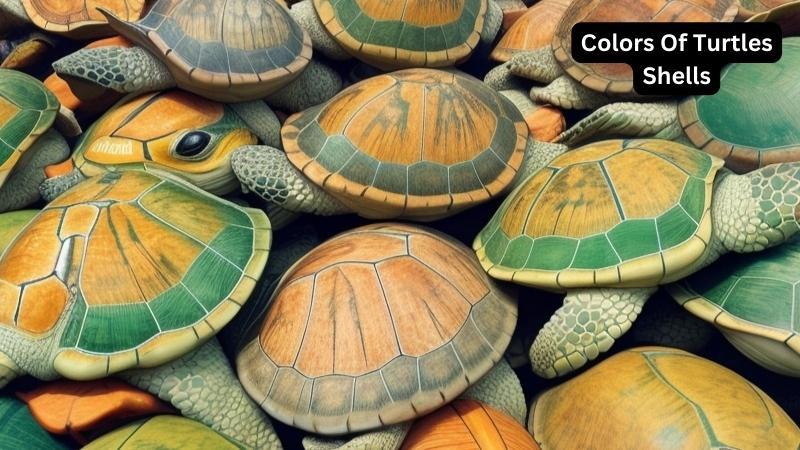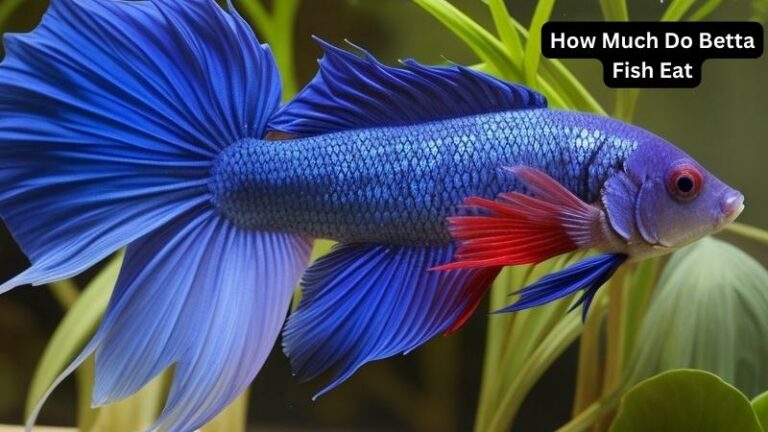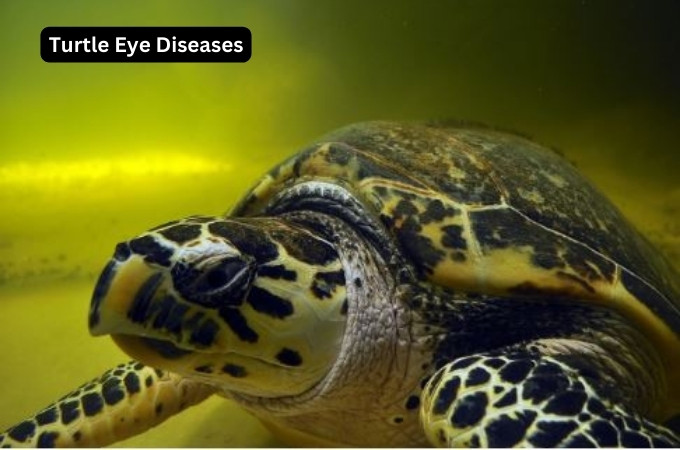Colors Of Turtles Shells
Colors are fascinating, aren’t they? Well, have you ever wondered about the colors of turtle shells? They come in a variety of shades, and it’s a captivating subject that we’re about to delve into. So, let’s dive right in and explore the wonderful world of Colors Of Turtles Shells!
Now, you might be thinking, “Why are turtle shells different colors?” Great question! The colors of turtle shells can vary based on factors like the species of the turtle, their habitat, and even their age. It’s like a beautiful palette that nature uses to paint these amazing creatures.
From vibrant greens to soothing browns and even striking patterns, turtles have shells that are truly a sight to behold. Each color serves a purpose, whether it’s camouflage to help them blend into their surroundings or signaling dominance and identity among their own kind.
So, if you’re ready to uncover the secrets behind the colors of turtle shells and discover the stunning array of hues these creatures can sport, join us on this colorful journey. Get ready to be amazed by the incredible diversity and beauty that nature has bestowed upon these ancient reptiles!
The Colors of Turtle Shells: A Fascinating Natural Phenomenon
Turtles are captivating creatures, with their unique physical features and behaviors. One of the most intriguing aspects of turtles is the coloration and patterns of their shells. Each turtle species boasts its own distinct shell coloration, ranging from earthy tones to vibrant hues. In this article, we will explore the fascinating world of turtle shell colors, uncovering the reasons behind their variations, and diving into the significance of these vibrant hues in the turtle kingdom.
The Significance of Coloration in Turtle Shells
Turtle shells come in an array of colors, and these colors serve various purposes in the lives of these intriguing creatures. The shell’s colors often serve as a form of camouflage, allowing the turtle to blend in with its surroundings and avoid predators.
For example, turtles found in lush green environments may exhibit shades of green on their shells, helping them blend seamlessly with the vegetation. Conversely, turtles living in sandy or rocky habitats may possess shells with sandy or brown tones, providing excellent camouflage against their surroundings.
In addition to their role in camouflage, the colors of turtle shells can also serve as a form of species recognition and sexual dimorphism. Some turtle species have distinct patterns or color patches on their shells, allowing individuals to identify members of their own species and differentiate them from others.
These unique color patterns may also play a role in courtship rituals, with males flaunting their shell colors to attract potential mates. The bright and eye-catching hues on certain turtle shells may indicate the male’s health and vitality as a potential partner.
Furthermore, turtle shell colors can also change throughout the individual’s lifespan. As turtles grow and mature, their shells undergo changes in coloration. Juvenile turtles generally exhibit more vibrant and contrasting colors, which tend to fade and become more subdued as they reach adulthood. This transformation in shell colors is believed to be influenced by various factors, including diet, age, and environmental conditions.

The Color Range of Turtle Shells: A Kaleidoscope of Hues
When it comes to the colors of turtle shells, nature offers an incredible spectrum of hues, ranging from subtle earth tones to striking and vivid shades. Let’s explore some of the most common colors found in turtle shells:
- Olive: One of the most frequently seen shell colors is a beautiful olive green. This color often appears in turtles living in freshwater habitats that are rich in vegetation. The olive green shell helps them blend seamlessly with their surroundings and provides excellent camouflage.
- Brown: Turtles inhabiting areas with sandy or rocky terrains often have shells with shades of brown. This color allows them to camouflage effectively against the sandy or rocky background, keeping them protected from potential predators.
- Black: Black is a rare but striking shell coloration, and it is often associated with larger turtle species like the Black Softshell Turtle. The black coloration provides excellent heat absorption properties, allowing these turtles to bask in the sun while regulating their body temperature.
- Yellow: Some species, such as the Yellow Mud Turtle, exhibit shells in vibrant shades of yellow. This bright color not only adds beauty to their appearance but also aids in species recognition and courtship rituals.
- Red: The Eastern Box Turtle is known for its stunning red and orange shell colors. These vibrant hues not only make them visually appealing but also contribute to species recognition and mate selection.
- Patterned: Many turtle species exhibit intricate patterns on their shells, combining various colors and shapes. These patterns can range from mottled patches to intricate lines and circles, adding an extra layer of visual interest and aiding in species identification.
- Albino: Although not a true color, albino turtles are unique and captivating. These turtles lack pigmentation, resulting in a shell that appears completely white. Albino turtles are incredibly rare and are often highly sought after by collectors and turtle enthusiasts.
Admiring the Beauty: Appreciating the Diverse Colors of Turtle Shells
The colors of turtle shells are not just visually appealing but also provide valuable insights into the lives of these extraordinary creatures. By understanding the significance of these colors, we can better appreciate the role they play in the survival and reproductive success of various turtle species. Whether it’s the camouflage provided by earthy tones or the vibrant hues used in courtship displays, the colors of turtle shells offer a glimpse into the intricate and magnificent world of these ancient reptiles.
The Evolution of Turtle Shell Colors
The colors of turtle shells have evolved over millions of years, adapting to the diverse environments where turtles thrive. Understanding the evolution of these colors can shed light on the fascinating natural history of turtles and the biological processes that have shaped their appearances. In this section, we will delve into the evolutionary factors that have influenced the variation in turtle shell colors.
The Role of Environment in Turtle Shell Coloration
The environment plays a crucial role in determining the coloration of turtle shells. As turtles evolved and diversified, they populated different habitats across the globe, ranging from lush rainforests to arid deserts. To survive and thrive in these various environments, turtles underwent adaptations that favored certain shell colors.
In environments with dense vegetation, turtles evolved to have shell colors that blended with the surrounding greenery. This excellent camouflage protected them from predators and allowed them to stalk their prey effectively. Similarly, turtles that inhabited sandy or rocky terrains developed shell colors that matched the sand or rocks, making them virtually invisible to potential threats.
Furthermore, the availability of food sources within a particular environment also influenced the evolution of shell colors. Turtles that consumed algae-rich diets naturally developed green or yellowish hues on their shells, reflecting their plant-based diet. On the other hand, turtles that fed on crustaceans or other marine animals often had shells with darker colors, such as brown or black, helping them blend in with the muddy or rocky ocean floor.
The Influence of Genetics on Turtle Shell Colors
Turtle shell colors are not solely determined by environmental factors; genetics also play a significant role in the development of these colors. The genes passed down from parents to offspring dictate the pigmentation patterns and color variations observed in turtle shells.
There are specific genetic factors that regulate the production of melanin, the pigment responsible for most of the colors observed in reptiles. Changes in these genetic factors can result in variations in melanin production, leading to different shell colorations. Mutations in genes related to pigment production can give rise to unique shell colors, such as albinism or leucism.
Genetic factors can also contribute to the patterns and markings on turtle shells, making each individual unique. Just as humans have different hair colors and patterns, turtles display incredible diversity in their shell colors and patterns due to genetic variations.
Turtle Shell Colors as a Form of Individual and Species Identity
Turtle shell colors play a vital role in individual and species identity. The diversity of shell colors allows turtles to recognize members of their own species and differentiate them from others. This is particularly important during mating season when courtship rituals and mate selection take place.
For example, female turtles may be more attracted to male turtles with brighter or more vibrant shell colors, as these colors may indicate the male’s health and genetic fitness. By selecting mates with desirable shell colors, females can increase the chances of producing offspring with robust genetic traits and, potentially, enhanced survival abilities.
The unique shell coloration of each turtle species also aids in conservation efforts. Researchers and conservationists can study the shell colors and patterns of turtles in different regions to track population dynamics, migration patterns, and genetic diversity. This information is crucial in formulating effective conservation strategies to protect these incredible creatures and their habitats.
The Influence of Turtle Shell Colors on Human Perception
Turtle shell colors have fascinated humans for centuries, and these beautiful hues continue to captivate our attention. In this section, we will explore the influence of turtle shell colors on human perception and how they have inspired art, fashion, and cultural symbolism.
The Aesthetic Appeal of Turtle Shell Colors
The intricate and vibrant colors displayed on turtle shells have inspired artists, fashion designers, and artisans across the globe. From paintings to sculptures and jewelry, the beauty of turtle shell colors has been translated into various art forms, capturing the imagination of both artists and art admirers.
In the world of fashion, turtle shell colors have influenced clothing designs and color palettes. Earthy tones, such as olive green and warm browns, are often used in fashion collections, mimicking the natural hues found in turtle shells. These colors are considered timeless and versatile, appealing to individuals with diverse fashion preferences.
Turtle shell colors have also found their way into interior design and home decor. From wall paints to furniture upholstery, the rich and soothing colors of turtle shells can effortlessly create a calming and organic ambiance in any living space.
Cultural Symbolism and Traditions
Turtle shell colors hold cultural significance in many societies and have often been incorporated into traditional practices and symbolism. In various indigenous cultures, turtles are revered as symbols of longevity, wisdom, and protection. The colors of turtle shells represent different virtues and are believed to bring luck and prosperity.
For example, in some Native American cultures, the earthy tones in turtle shell colors are associated with grounding, strength, and connection to the natural world. In Chinese culture, red, a color often found on turtle shells, signifies good fortune, joy, and celebration. These cultural associations with turtle shell colors demonstrate the profound impact these colors have on human perceptions and beliefs.
It is important to note that the conservation and protection of turtle species should always come first. While we admire and appreciate the beauty of their shells, it is crucial to ensure that the natural habitats of these creatures are preserved, allowing them to thrive and continue inspiring us with their magnificent colors.
Key Takeaways: Colors of Turtle Shells
- Turtle shells can come in various colors, such as green, brown, and even black.
- The colors of turtle shells are often determined by their species and habitat.
- Some turtles have shell colors that help them camouflage in their surroundings.
- Shell colors can also change depending on the turtle’s age and gender.
- The bright colors of turtle shells can serve as a warning to predators.
Faqs for Colors Of Turtles Shells:
Turtle shells come in a variety of colors due to a combination of genetic factors and the environments in which they live. The colors serve different purposes, such as camouflage or signaling to potential mates. The pigments in their shells can range from hues of green, brown, and gray to more vibrant shades of red, yellow, and orange.
The color of a turtle’s shell can also change with age. For instance, hatchlings may have brighter colors to help them blend into their surroundings and avoid predators, while older turtles may exhibit darker shades that provide better protection as they grow.
2. Do turtle shells change color as the turtles grow?
Yes, turtle shells can change color as turtles grow. The change in color is primarily influenced by genetic factors and the environment they inhabit. While some turtles may maintain the same color throughout their lives, others may experience significant color transformations.
As turtles mature, their shells may darken or develop patterns. This change can be attributed to factors such as hormonal shifts, exposure to sunlight, and environmental triggers. These alterations in color and pattern can aid in camouflage, thermoregulation, and even species recognition among turtles.
The color of a turtle’s shell alone is not always a reliable indicator of its species. While certain species may tend to have particular color patterns or shades, there can be variations within a species, making color identification alone challenging.
Instead, it is essential to consider other characteristics such as size, shape, behavior, and geographical distribution to accurately determine a turtle’s species. Consulting field guides or seeking expert advice can help in identifying turtle species more accurately.
Turtles with brighter shells can have advantages and disadvantages depending on their specific environments. In habitats with dense vegetation, turtles with brighter shells may find it easier to blend in and remain hidden from predators. On the other hand, in open habitats with fewer hiding spots, brighter shells may make them more visible to predators.
The advantages or disadvantages of brighter shells also depend on the turtle’s behavior, feeding habits, and mating strategies. While some brightly colored turtles use their shells to attract mates, others rely on different visual or behavioral cues. Essentially, the specific ecological context and the turtle’s overall survival strategy determine the impact of shell color.
5. Are there any endangered turtles with distinct shell colors?
Yes, some endangered turtle species have distinct shell colors that make them stand out. For example, the Hawksbill sea turtle has a stunning shell pattern with shades of yellow, orange, brown, and black. The radiated tortoise from Madagascar is known for its beautiful star-like patterns on a yellowish background.
Unfortunately, many of these turtles face the threat of habitat loss and illegal trade, which puts their populations at risk. Conservation efforts are crucial to protect these endangered turtles and preserve the unique colors and patterns of their shells for future generations to admire.
Summary:
Did you know that the color of a turtle’s shell can tell us about its habitat? Turtles have different shell colors to blend in with their surroundings. For example, turtles with green shells live in areas with a lot of vegetation. On the other hand, turtles with brown or tan shells may live in sandy habitats. This amazing adaptation helps turtles stay hidden and safe.
Different colors can also indicate a turtle’s species. For instance, some turtles have a red or orange plastron (the underside of the shell), while others have a yellow or white one. These unique colors help scientists identify different types of turtles. So next time you see a turtle, take a closer look at its shell colors to learn more about where it lives and what kind of turtle it is!


